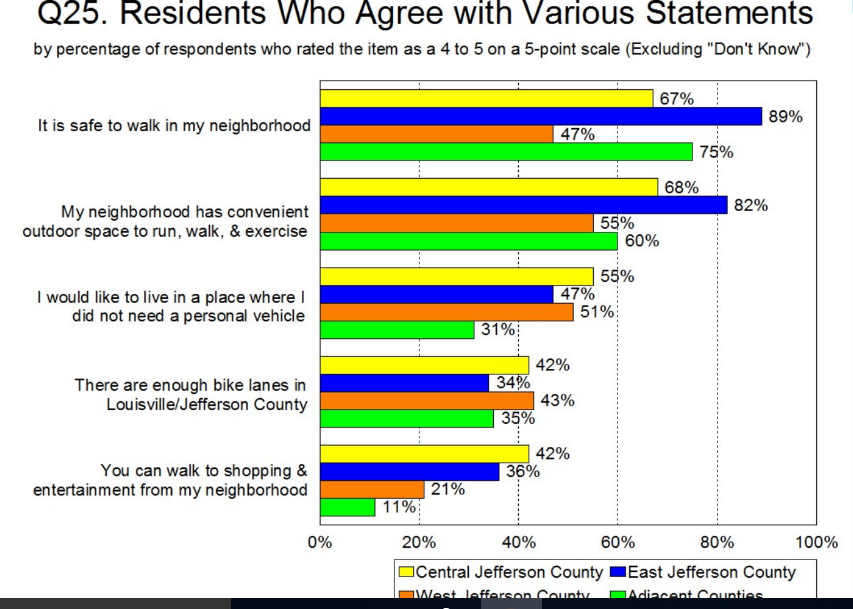Metro Louisville is designing a comprehensive plan to replace our previous plan – Cornerstone 2020. Metro hired a consultant whose survey of residents in the county and the surrounding counties yielded interesting information. The findings have tremendous implications for Louisville. Findings:
– Highest priority when deciding where to live – Quality of the Environment and Access to Sidewalks
– Least satisfying aspect of transportation – Ease of bicycling along major streets, Ease of walking along major streets, quality of public transit
– Percentage of residents who agree with the statement “I would like to live in a place where I did not need a private vehicle.” (see the third statement on the posted image)
Central Louisville residents – 55%
Central Louisville residents – 55%
East Louisville residents – 47%
West Louisville residents – 51%
Residents of surrounding counties – 31%
When 31% of the residents of the surrounding counties want to be able to live without a personal vehicle, Louisville should respond. Over ten years ago another consulting firm hired by Louisville reported that we must make it possible for citizens to live easily without a personal vehicle. And cities around the world are limiting car access downtown.
If Louisville is to be competitive in attracting residents and businesses we should act immediately by simultaneously:
– concentrating TARC service in the area where it will be most possible to live easily without a car, downtown and surrounding old neighborhoods. ‘Beyond the Watterson’ is hopelessly car dependent, that is a battle we are not going to win soon. As ridership increases centrally, extend the service in concentric rings.
– repairing sidewalks working from downtown outward
– converting downtown streets to two way
– creating dedicate lanes (for TARC, EMS, LMPD & fire)
– giving right-of-way to TARC, EMS, LMPD & fire at intersections
– limiting cars downtown (take the cold turkey outright ban approach or have every intersection light blink only as a yellow caution – watch car traffic slow as buses whip past and bicycles filter thru) (taming traffic eliminates the need for ‘bike lanes / debris fields / door zones / the reservation’).
The sidewalk detail and re-striping are the only steps requiring any engineering, design and rebuilding. These steps, with no coercion by the city, will be followed by the willing conversion of surface parking lots, from downtown outward, into housing, commerce, parks, gardens, etc.

